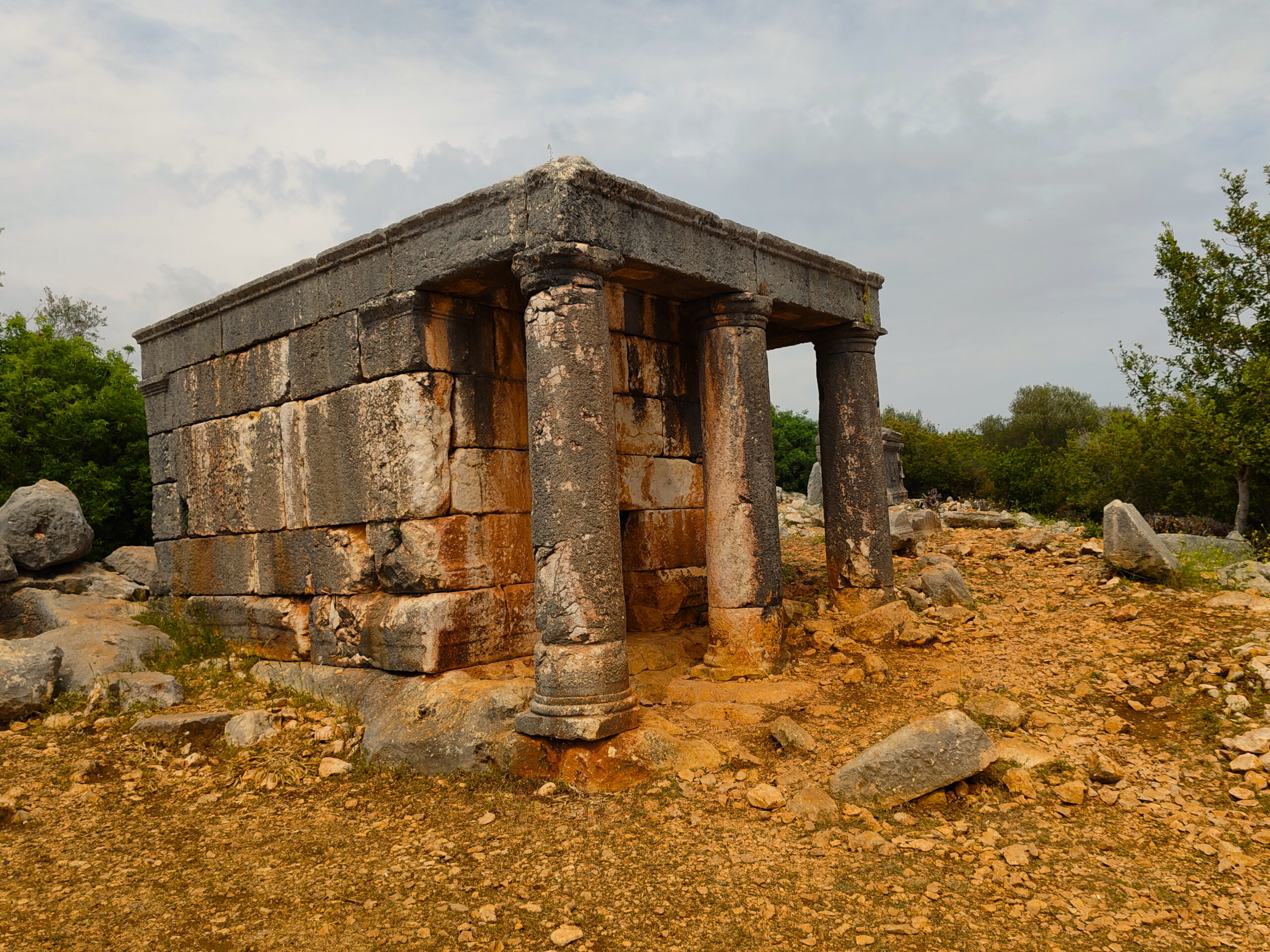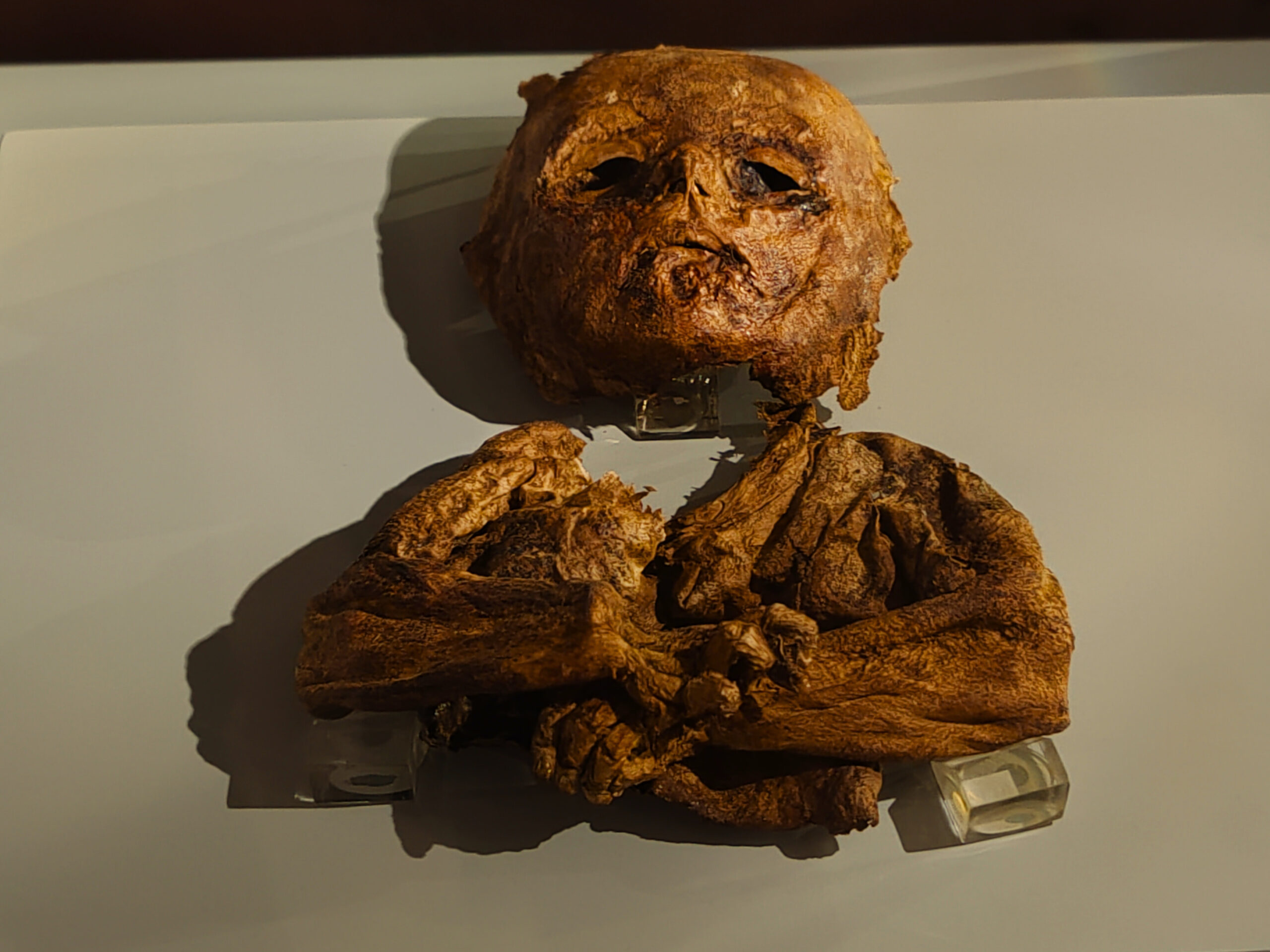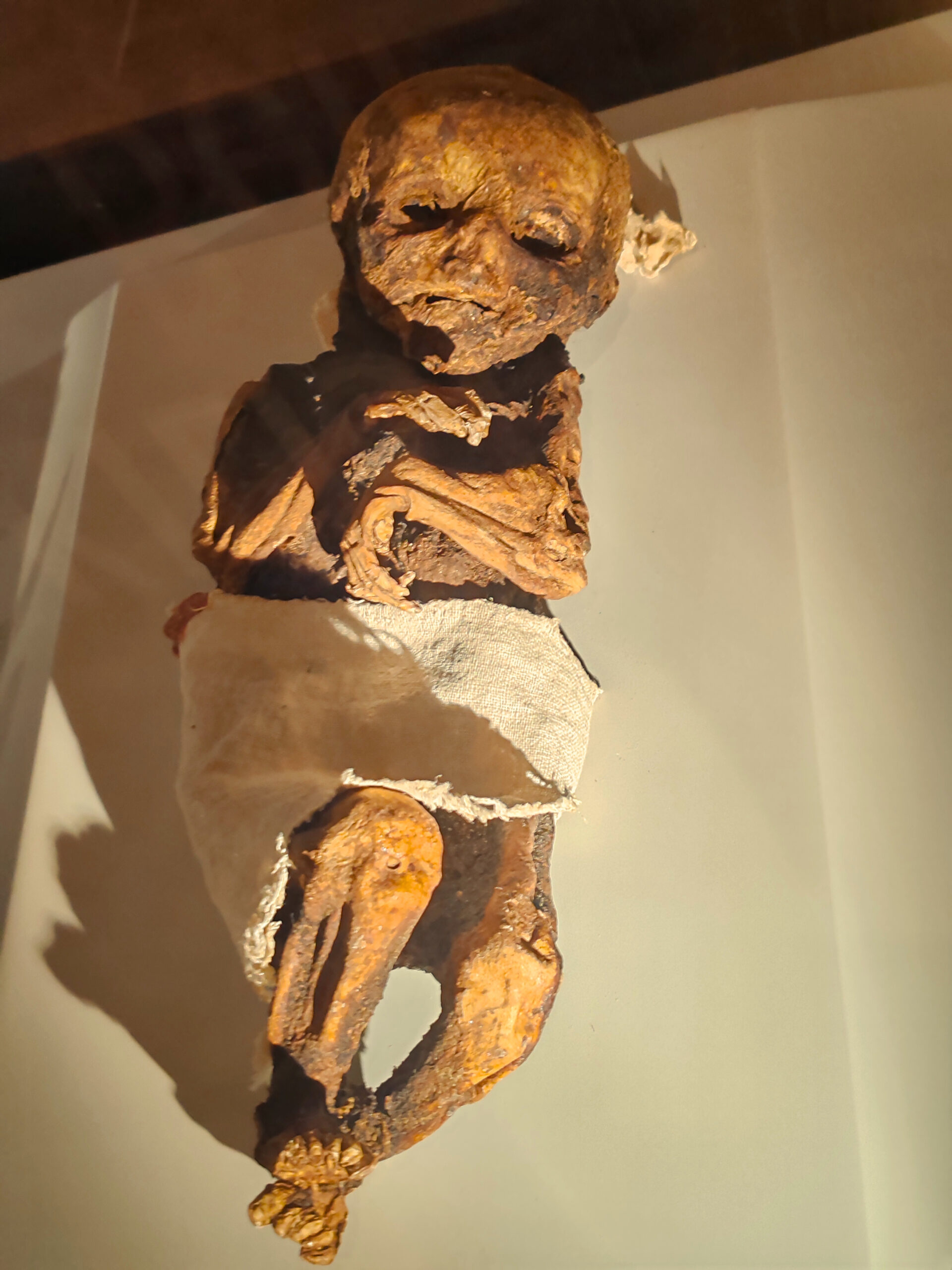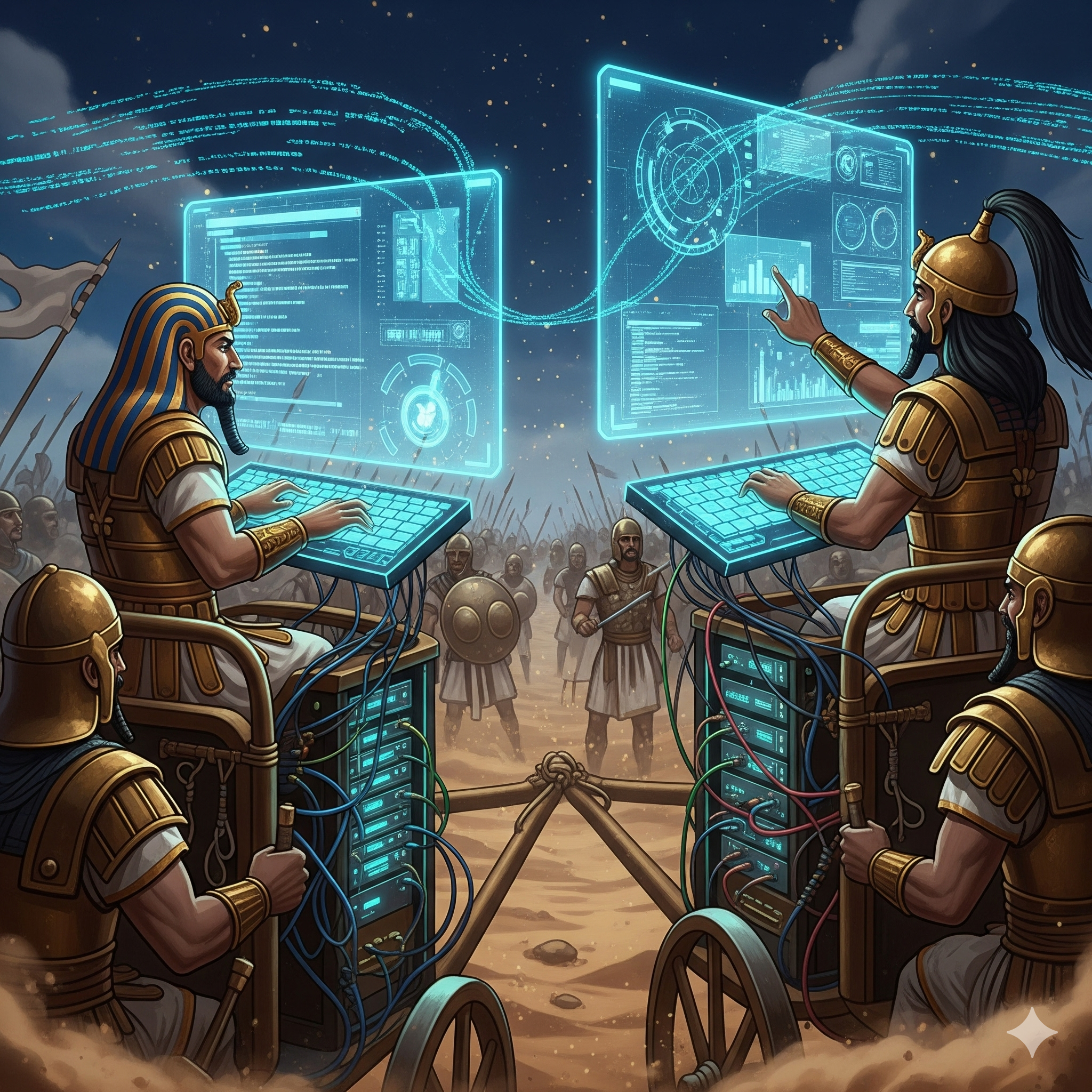Dust of Ages
Entrance to the Labyrinth
Along Turkey’s southern D400 highway, hidden among bushes, junipers, and rare passing buses, lies a deserted city. From the road, you barely see it — just a sign with a name that sounds like a doom metal album: Kanlidivane. In Turkish, it means “Bloody Throne.” Or perhaps “A Council That Leaves Stains.” The meaning depends on how deep you’re used to digging into words. But you can feel it: whatever it meant, it didn’t end well.
Before you lies a ruin, scattered around a black karst sinkhole. No town, no village — just wind, stone, and silence stretched like a tight wire. And somewhere beneath your feet, the past is still ringing.
Past the Empires
The story of KanliDivane begins with geology. The karst sinkhole — about 60 meters deep and 70 across — formed millions of years ago. Limestone, water, and time — these were the true architects. Underground streams slowly carved voids beneath the surface until one day the earth collapsed. People came later and turned the hole into a symbol. The abyss became ritual.
A settlement has existed here since at least the Hellenistic period. By the 1st century BCE, it was part of the Kingdom of Cilicia. One of its rulers, a Roman vassal named Tarkondimotos, is mentioned as a benefactor who financed the necropolis. The city was significant enough to mint coins.
During Roman times, tombs, temples, and perhaps even an amphitheater were built. Above the sinkhole stood a throne or a ceremonial platform — a public stage. Legends say criminals were thrown straight into the pit. Brutal, symbolic, effective.
Under Byzantium, Kanlı Divane became a Christian center. Basilicas, crypts, and monastic quarters appeared. It was clearly used for religious and memorial purposes. Decline likely came by the 9th or 10th century.
Fragments of Now
Kanlı Divane is technically an open-air museum, but one with a hole in the middle and an atmosphere more suited to an apocalyptic parable than a fridge magnet.
Everything here is left in semi-ruin — not out of neglect, but because some things shouldn’t be touched. Stones are texts. Tombs, columns, sarcophagi — chapters written in limestone. Inscriptions are mostly worn, but the ones that remain speak of gifts, saints, death, and oblivion. The usual themes of any successful civilization.
The space lacks a clear layout. Basilicas stand as if thrown together in a rush, staircases lead nowhere, tombs stare into the void. It all feels built by minds balancing mysticism, fear, and bureaucratic logic.
Shadows at the Edge of Reason
The place is eerily beautiful. The sinkhole — a geological version of The Eternal Question. Cliff walls vanish into shadow, and below — pure silence. Even birds avoid it.
Nearby are stone sarcophagi with half-erased texts, rock-carved chairs, a pulpit standing awkwardly over the drop. A stage before the abyss. A sermon with no audience.
Occasionally, concerts are held here. Modern speakers, Byzantine ruins, lights set to romantic gothic. Sound falls into the pit and comes back up — like a reply from the underworld.
Pilgrimage has turned into tourism. Some take photos, some just breathe the silence. And some stand at the edge and stare down. For a long time.
How We Got There
You can reach it from Mersin or Silifke by bus or dolmuş heading to the village of Ayaş. On the D400 highway, there’s a sign: Kanlidivane. From there, it’s about 3 km on foot. In summer — bring water and a hat.
Entrance is about 3 euros. It’s officially an archaeological site. There’s a ticket booth, few tourists, and some signage — but not everywhere. Be ready to trust your instincts.
You can combine your visit with nearby sites like Olba, Adamkayalar, Kızkalesi, the Heaven and Hell caves, or Narlıkuyu — all within a short range.
Echo in the Void
KanliDivane is where geology and history meet in a single sinkhole. It gives no answers. It only asks questions: what are we building? why do we die? and what will be left of us in two thousand years — a plaque? a staircase to nowhere?
This city was never a capital. Never a great metropolis. But it remains. It outlived empires, kings, ideologies, and tourism.
Maybe that’s what immortality really is — not becoming legend, just not disappearing.
#Hashtags #KanliDivane #BloodyThrone #DustOfAges #VoiceOfRuins #Turkey #Archaeology #KarstSinkhole #AncientRuins #Cilicia #History #Ruins #HowWeGotThere
Our Telegram-channel: Voice Of Ruins https://t.me/Voice_Of_Ruins
Our Instagram: Voice Of Ruins https://www.instagram.com/voiceofruins/
Our group on Facebook: Voice Of Ruins https://www.facebook.com/share/g/16aitn9utM/ Our site: Voice Of Ruins https://www.voiceofruins.org






































Leave a Reply